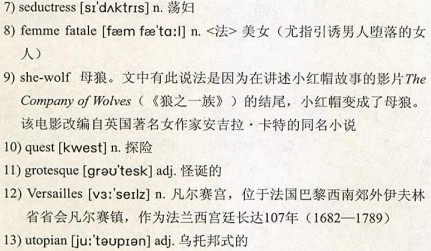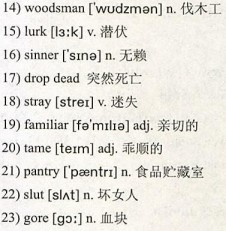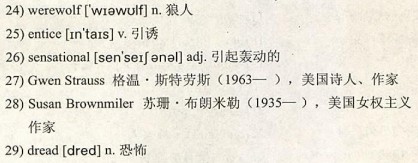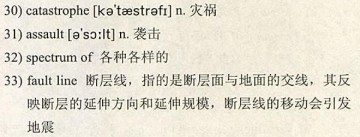查尔斯·狄更斯曾经说过:“小红帽是我的初恋。我总觉得要是娶了小红帽,我就会知道什么叫做天赐良缘。”是的,那个穿着红斗篷的小女孩身上散发着稚气、纯真和勇敢的气息。但是,有没有人真正地理解红斗篷下面蕴藏的历史故事与文化内涵呢?2003年,美国女作家凯瑟琳·奥兰斯汀出版了Little Red Riding Hood Uncloaked: Sex, Morality, and the Evolution of a Fairy Tale(《百变小红帽:一则童话三百年的演变》)——解读了该童话背后的历史典故与文化内涵,揭开了红斗篷下面所有的秘密。而在此,小编特别献上一篇有关该书的书评,供读者朋友们一窥这些潜藏的秘密! ——Mac
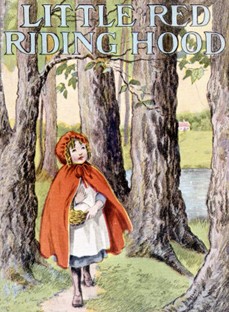 Forget everything you ever thought you knew about Little Red Riding Hood. In Little Red Riding Hood Uncloaked: Sex, Morality, and the Evolution of a Fairy Tale, the author, Catherine Orenstein, explores the history of the fairy tale, from the French court, 1)Charles Perrault, Hans Christian Anderson, and the Brothers Grimm, to 2)Bruno Bettelheim and 3)Anne Sexton.
Forget everything you ever thought you knew about Little Red Riding Hood. In Little Red Riding Hood Uncloaked: Sex, Morality, and the Evolution of a Fairy Tale, the author, Catherine Orenstein, explores the history of the fairy tale, from the French court, 1)Charles Perrault, Hans Christian Anderson, and the Brothers Grimm, to 2)Bruno Bettelheim and 3)Anne Sexton.
As she explains, “The endeavor of this book is to draw Little Red Riding Hood forth from her literary 4)crypt, to unwrap the protective 5)vellum that 6)mummifies her in the rare book section of the library.”
In this survey of literature, Orenstein inspects the derivations of Little Red Riding Hood, who has been depicted as a 7)seductress, a victim, a 8)femme fatale, and a 9)she-wolf in various works. Changes in society have dramatically affected the evolution of this story.
把你所以为你了解的有关《小红帽》的一切都忘掉。在《百变小红帽:一则童话三百年的演变》一书里,作者凯瑟琳·奥兰斯汀从法国宫庭、查尔 斯·佩罗特、汉斯·克里斯蒂安·安徒生、格林兄弟、布鲁诺·贝特尔海姆以及安妮·塞克斯顿这些角度探索了《小红帽》这则童话的历史。
正如她所解释的:“本书致力于挖掘小红帽这个文学角色背后的隐喻,撕开那层将小红帽这个角色如木乃伊般裹缠固化在图书馆藏放珍本的一角的牛皮纸。”
在这一文学探究中,奥兰斯汀审视了小红帽这角色在不同作品中衍生出的不同身份,其形象有被描述成荡妇,也有受害者、祸水红颜或是母狼。社会的改变对于这则童话的演变有着深远影响。
The Origins of the Fairy Tales 童话的起源
Fairy tales are fantastical tales, with talking creatures, great heroes, fair maidens, magical and miraculous deeds, and heroic 10)quests. While the tales are often considered part of children’s literature, they can also be horribly 11)grotesque. According to Orenstein, “The first recorded reference to a fairy tale seems to occur in a letter Madame de Sevigne wrote to her daughter in 1677 describing one of ‘the stories they amuse the ladies with at 12)Versailles’.” The tales became popular in French salons, entertaining men and women with 13)utopian musings.
D’Aulnoy is given credit for publishing the first fairy tale in 1690, but it wasn’t long until Perrault and others carried on the tradition.
童话是虚构的故事,其中包含会说话的动物、大英雄、金发美人、惊人而不可思议的魔法,还有英勇的探险旅程。尽管童话常被视作儿童文学的一部分,但有些童话怪诞得让人感觉恐怖。据奥兰斯汀所言:“最早记载的童话似乎出现在一封由瑟薇恩女侯爵于1677年写给她女儿的信中,她描述了其中一个‘在凡尔赛,男人用来逗女人开心的故事’。”那些故事借助“乌托邦式的想象”来娱乐男男女女,在法国沙龙里广为流传。
德奥诺依公爵夫人被公认为是于1690年发表首个童话的人,随后,佩罗特和其他一些人也走上了童话创作之路。
An Epic Journey Re-invented 《小红帽》改编历程悠久
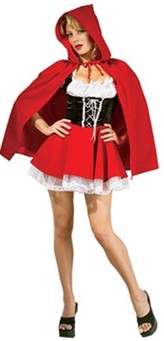 Actually, Little Red Riding Hood has many derivations and can be told in several ways. In Charles Perrault’s tale, the wolf (interpreted as a man who seduces women) hides under the covers, and urges the girl to “climb into bed with me.” The girl comments on “what big” arms, legs, ears, eyes, and teeth the wolf has, which ends with the wolf saying “The better to eat you!” The wolf then “threw himself upon Little Red Riding Hood and ate her up.” In Perrault’s fairy tale, published in 1697, no 14)woodsman comes to rescue her; and Little Red Riding Hood does not save herself.
Actually, Little Red Riding Hood has many derivations and can be told in several ways. In Charles Perrault’s tale, the wolf (interpreted as a man who seduces women) hides under the covers, and urges the girl to “climb into bed with me.” The girl comments on “what big” arms, legs, ears, eyes, and teeth the wolf has, which ends with the wolf saying “The better to eat you!” The wolf then “threw himself upon Little Red Riding Hood and ate her up.” In Perrault’s fairy tale, published in 1697, no 14)woodsman comes to rescue her; and Little Red Riding Hood does not save herself.
事实上,《小红帽》这则童话遭到多番改编。在这些改编的故事中,小红帽出场后,其经历和故事结局也多种多样。在查尔斯·佩罗特改写的故事里,大灰狼(被视作勾引女人的男人)藏在被子下,催小红帽“钻进被窝里和我一起睡”。女孩叹谓那只狼的手臂、腿、耳朵、眼睛和牙齿都“如此巨大”,狼最后只说了句“吃了你更好!”接着,狼“扑向小红帽,把她吞进肚子里”。在佩罗特于1697年发表的故事里,没有任何伐木工过来救她,而小红帽也没有成功自救。
It’s a morality tale, warning girls and women that wolves may 15)lurk in every guise.
这是一则充满道德寓意的童话,告诫女性“狼可能以各种形式伪装潜伏”。
Little Red Cap, by Jacob and Wilhelm Grimm, is one of the most famous derivations of the Red Riding Hood tale. After the wolf ate Little Red Cap, he went to sleep and his snoring drew the attention of a hunter. The hunter enters the house, sees the sleeping wolf and says: “So here you are, you old 16)sinner...I’ve been looking for you for a long time.” Then, instead of shooting the wolf, he cuts open the wolf and lets out Little Red Cap and her grandmother. The hunter then puts heavy stones in the wolf’s stomach. When the wolf wakes up, he 17)drops dead. The hunter then skins the wolf and goes home. Of course, Little Red Cap has learned her lesson. She will never again 18)stray from the path, or be fooled by a wolf’s deception.
由雅各布和威廉·格林创作的《小红帽》是所有改编故事中最著名的一个。狼吞下小红帽后睡着了,他的鼾声引起了一个猎人的注意。猎人走进屋,看见那只沉睡中的狼,说道:“原来你在这里,你这老流氓……我找你找了很久了。”接着,他并没射杀那只狼,而是剖开它的肚子,救出了小红帽和她的祖母。猎人接着往狼的肚子里塞进重石。狼一觉醒来就猝死了。猎人于是剥下狼的皮,回家去了。当然,小红帽也从中吸取了教训。她再也不会到处乱跑或是受到狼的诡计诱骗。
Not all of the Little Red Riding Hood versions are as19)familiar or as 20)tame. In an oral folktale, The Grandmother’s Tale, the wolf arrives at Grandmother’s house, kills her, and puts her flesh and blood in the 21)pantry. Upon arrival, the wolf tells the girl to eat the flesh and drink the wine (blood) in the pantry. And, as she eats, the cat says, “She is a 22)slut who eats the flesh and drinks the blood of her granny.” Despite the bloody 23)gore of this tale, the girl manages to escape from the wolf.
并非所有版本里的小红帽都如此亲切乖顺。在一个口述的民间故事《祖母的故事》里,狼来到祖母的房子,将她杀死,并将其血肉放置于食品贮藏室内。小红帽一来到,狼就让她吃食品贮藏室的肉,喝那些酒(即血)。而在她吃喝之际,有只猫还在一边说道:“她是个臭婆娘,竟然吃下她祖母的肉,喝下她的血。”尽管该童话有其血腥的一面,但在此故事里,小红帽还是成功逃出了狼的掌心。
From there, Orenstein discusses the case of Stubbe Peeter, a man who was accused of taking on the form of a 24)werewolf, as he 25)enticed men, women, and children to their deaths. According to Orenstein, “Even though Stubbe Peeter’s trial was 26)sensational, his crime was not unique. Indeed, in certain areas, at this particular moment in history, it seems to have been almost commonplace.”
奥兰斯汀借此还讨论了一下有关史图柏·彼特的案例。史图柏·彼特被指控化身狼人,诱杀男女老少。据奥兰斯汀所言:“尽管史图柏·彼特的审判轰动一时,然而他的罪行并非独一无二。事实上,在历史上的这一特别时刻,这类罪行在某些地区几乎随处可见。”
In more recent years, Little Red Riding Hood has changed dramatically, appearing in movies, commercials, advertisements, cartoons, and more. She has also been reinvented by modern writers like Anne Sexton and 27)Gwen Strauss. Feminist analysis also plays a part in more recent interpretations of the Little Red Riding Hood tale.
最近几年,随着“小红帽”的形象出现在电影、商界、广告界、卡通片和更多领域,其角色也大为改变。她还被安 妮·塞克斯顿和格温·斯特劳斯这些现代小说家彻底改造了一番。在对《小红帽》这则童话的新近解读中,女权主义分析起了一定作用。
Orenstein features a quote by 28)Susan Brownmiler, who says: “Fairy tales are full of vague 29)dread, a 30)catastrophe that seems to befall only little girls...There are frightening male figures abroad in the woods—we call them wolves, among other names—and females are helpless before them.”
奥兰斯汀还特别引用了苏珊·布朗米勒的一句话:“童话里充满含糊的恐怖警示——一场似乎只会降临在小女孩身上的灾祸……森林里到处是可怕的男性角色——‘狼’只是他们其中的一个代 称——女性在他们面前是多么怯懦无助。”
According to Orenstein, “Modern fiction writers also frequently incorporate themes of sexual 31)assault in their retellings of Little Red Riding Hood.” Through these explorations of the tale, women would “reclaim” the tale. The story lasts because it has evolved through time and cultures. Orenstein says: “The truth is that the real world, as in the fairy tale, we are a bit of everything: a 32)spectrum of possibilities, interwoven and interrelated.”
据奥兰斯汀所言:“现代小说家在重写《小红帽》这则童话时,也很常加入性骚扰这类话题。”通过对这则故事的这样一些探究,女性会“反客为主”,找回自己在故事里的地位。这则童话久远流传是因为它伴随着时代更迭及不同文化而不断演变。奥兰斯汀说:“事实上,现实世界有如童话世界,千丝万缕相互联系:各种各样的可能性交织相连。”
As she explains, “Over the years, by intention or by intuition, the tale of Little Red Riding Hood has explored the shifting 33)fault lines of morality, sexuality, and gender.”
正如她所言:“这些年里,无论有意塑造还是凭直觉创作,《小红帽》这则童话探索了道德、欲望及性别之间移动着的断层线(编者注:指的是该童话在这些方面的探索与延伸引起了话题与争议)。”


